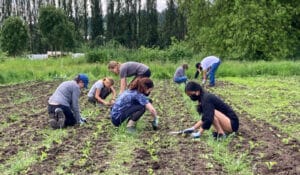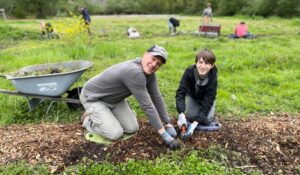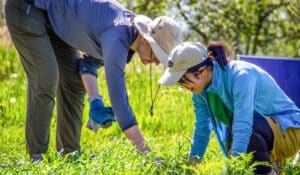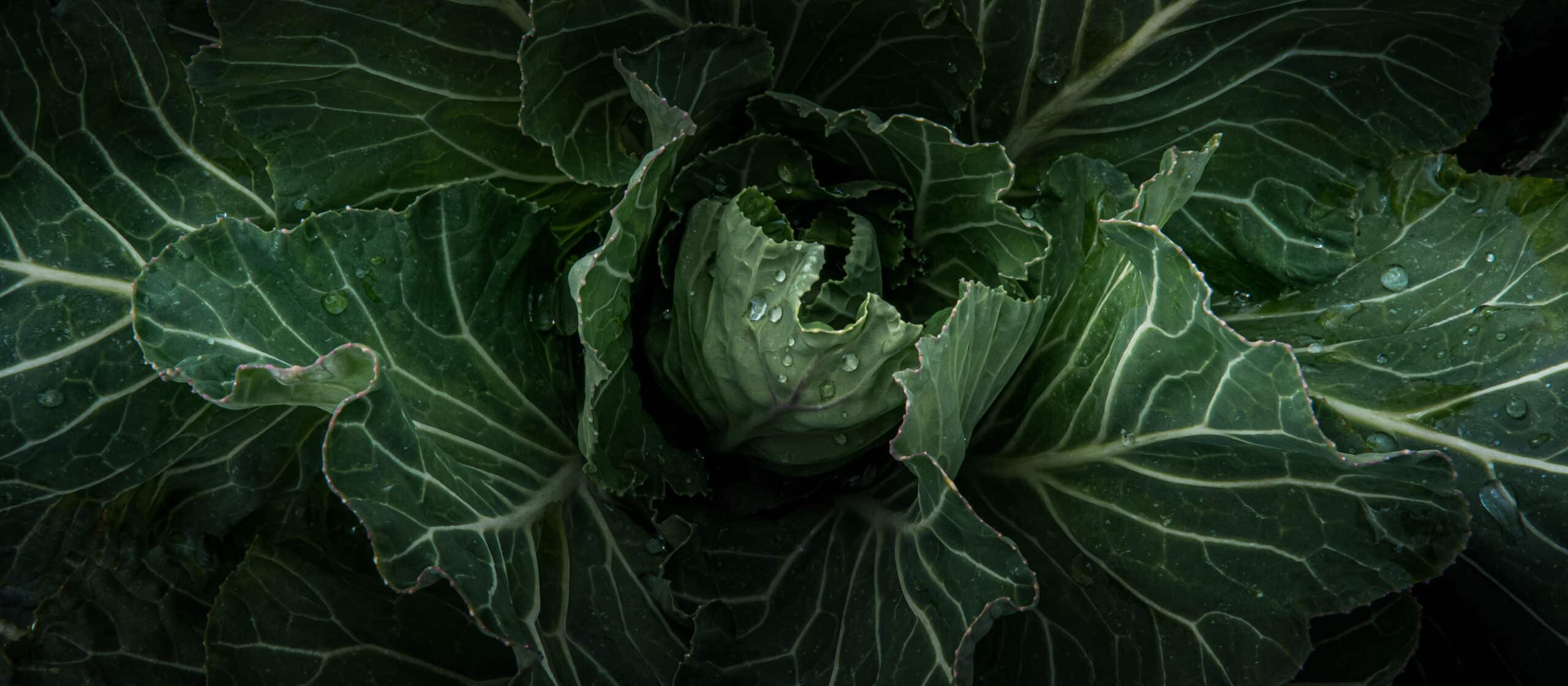
Do you have to give up your burger? Unpacking sustainable & local meat impacts on climate change
Do you have to give up your burger? Unpacking sustainable & local meat impacts on climate change
- posted on: August 20, 2020
- posted by: Rebecca Jordan
"*" indicates required fields

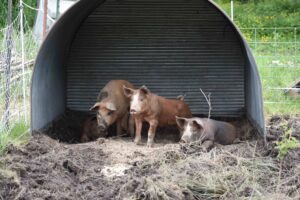
What if we didn’t have to stop eating meat to save the planet?
Many studies have shown that in order to drastically reduce carbon emissions, Americans need to switch to plant-based diets (often with a tongue-in-cheek comment about cow farts). Does that mean we should all stop eating meat?
There’s no denying that meat is a frequent favorite on America’s plate, and is a staple in many culturally-important recipes. Getting rid of meat entirely—and say, reforesting all of those pasturelands—might help us get to net zero by 2050, but it could also negatively impact nutrition and diet across the country. (Don’t worry; the Green New Deal doesn’t mention doing away with meat, though does address how agriculture impacts climate and a desire to ensure a healthy and equitable food system.) We still need to eat if we’re working to save the planet.
While many on our staff and in our community are vegetarians for this very reason, others augment their diet with local, sustainably- and ethically-raised meats. So what’s the difference between sustainably-raised meats and factory farmed meats, and how do they impact the environment?
First off: It’s true that animals are responsible for the lion’s share of agricultural carbon impacts. But as with all things, the whole truth is more complex than that. For example, what these statistics fail to put into context are the impacts of industrially-farmed meat alternatives (soy production is one of the biggest contributors to deforestation and habitat destruction), animals’ role in agriculture ecosystems, the fact that animals contribute less to climate change than fossil fuel emissions, and the impacts of industrialized agriculture.
Animals play a vital role in many working farms. Strategically grazed animals can help promote carbon sequestration (start on page 32 to read more about the complexities in grazed systems) and can help restore farmland for productive use. Here in the Pacific Northwest, pigs and goats help manage invasive weed species such as Himalayan blackberry and reed canary grass. Chickens, pigs, and ruminants also transform food waste into valuable fertilizer (not to mention a way to utilize calories in otherwise inedible-for-humans plants) and are a natural way to manage pests.
For those who cringe when they see a vegetable, there are ways to include meat in your diet without going full vegan. For example, chicken and pork seem to have a smaller climate footprint than beef and lamb.
That being said, beef isn’t the main problem; it’s the way that we are currently factory farming beef. According to the New York Times, Agriculture is the fifth-largest source of greenhouse gases in the United States—and that’s all of agriculture, not just meat.
Although meat production will always be resource-intensive, by supporting infrastructures that allow for small-scale farmers to manage land (such as maintaining current farmland for agricultural use, financial resources, and education), we can avoid greater climate repercussions. A primary reason why beef farming in particular increases the global carbon footprint is deforestation. In certain countries in Latin America which have heavy beef exports, increasing demands in the United States means that more places are being deforested for cattle pastures and facilities. By choosing local, pastured meat, we can ensure that our dietary choices will not ripple out into negative repercussions in places that will be hit hardest by climate change—and can ensure that farmers continue raising animals as an essential part of the farm ecosystem (which is good news whether or not you’re an omnivore!).
Big agriculture–which values high output over environmental (and even human) impacts—is responsible for massive environmental impacts beyond just carbon emissions, too; waste and water pollution is so highly concentrated that it usually isn’t cycled back into the farming system, and can cause environmental damage to water sources and habitats.
By contrast, pastured animal raising, small-scale farming, and agroecological practices seek to make the most of limited resources and steward the land in a responsible way. That means incorporating animal byproducts (i.e. manure, bones, or meat) to get the most out of those nutrients. Because animals are often spread out over a greater space (per animal respective to big agriculture), the farmland environment is better able to withstand the impacts. Keeping a balanced concentration—of animals and other resources—is key.
All of this, of course, assumes that pastures are not being overgrazed. Overgrazing and trampling of pastures can degrade the farmland environment in myriad ways. The choice to make when selecting meat, then, is not between big agriculture and small scale farms—but between farms that manage animals irresponsibly, and those that integrate animals into their farming plan. It’s important to note that what looks like responsible land management varies by region and individual place, and carbon-sequestering techniques that work at one farm may reverse sequestration efforts at others. One way or another, continued management of farmland is essential.
At 21 Acres, we both have animals integrated into our strategic management plan (goats and chickens) and have served as a host site for farmers getting started in animal farming. The four hogs on our campus, farmed by Masra Clamoungou, are integrated to help manage invasive reed canary grass, provide fertilization, and eat leftover scraps that are inedible for humans. The happy byproducts of farming this way means that the animals have overall a better quality of life: they can express natural behaviors in an environment that resembles their wild habitat.
So, to go vegetarian, or go whole hog on local meat? We each have to answer the ethical question for ourselves, but not every person has to quit meat for us to reduce climate change. Just like the concentration of animals in a specific pasture, our meat consumption isn’t necessarily a matter of either/or, but rather of the amount of meat that we eat (Americans eat more meat per capita than almost any other country) and where we source our meat from. Local, pastured and sustainably-farmed meats offer a solution for diehard meat eaters to make an environmental impact with their diet.











 back to blog overview
back to blog overview

